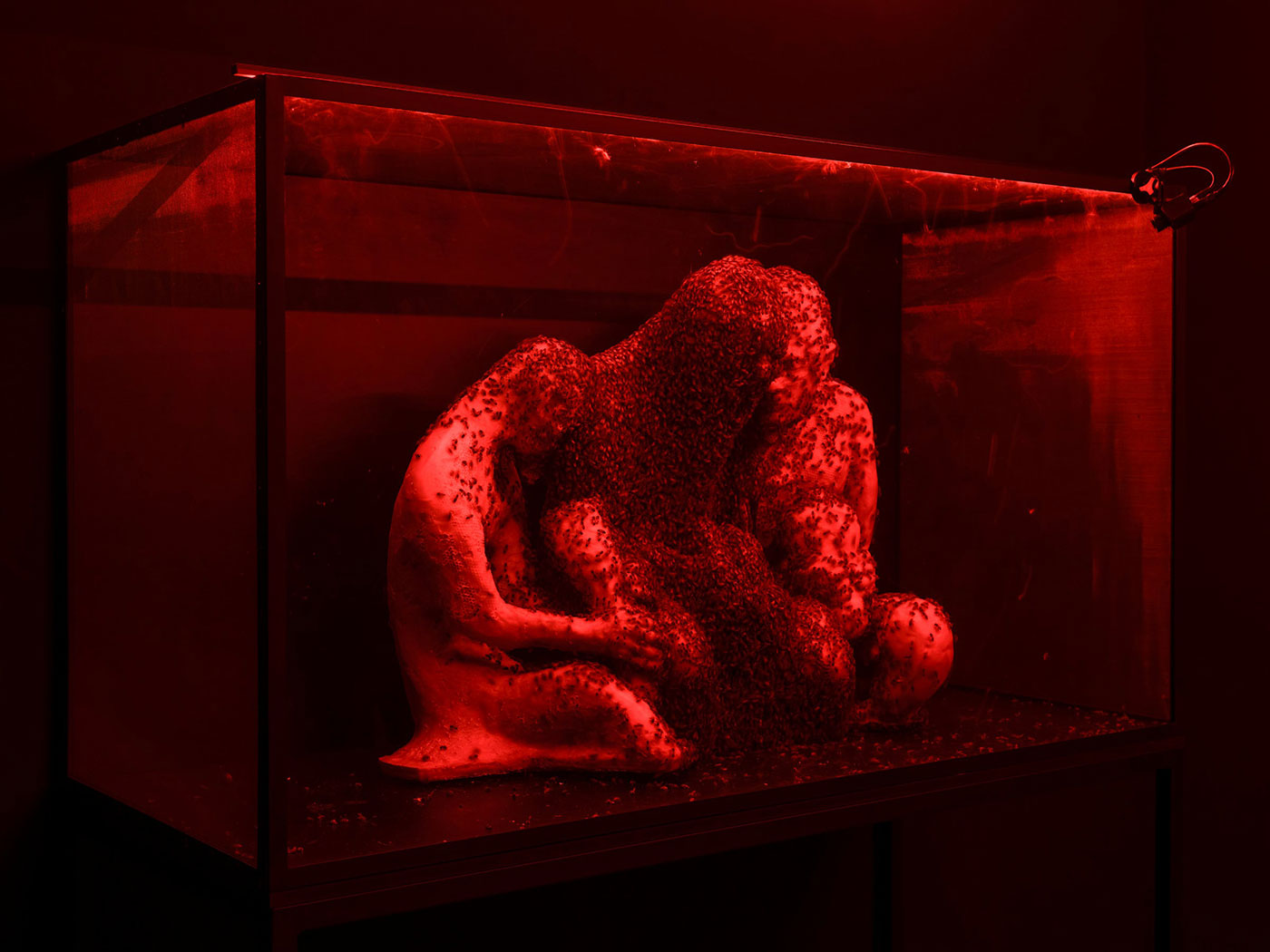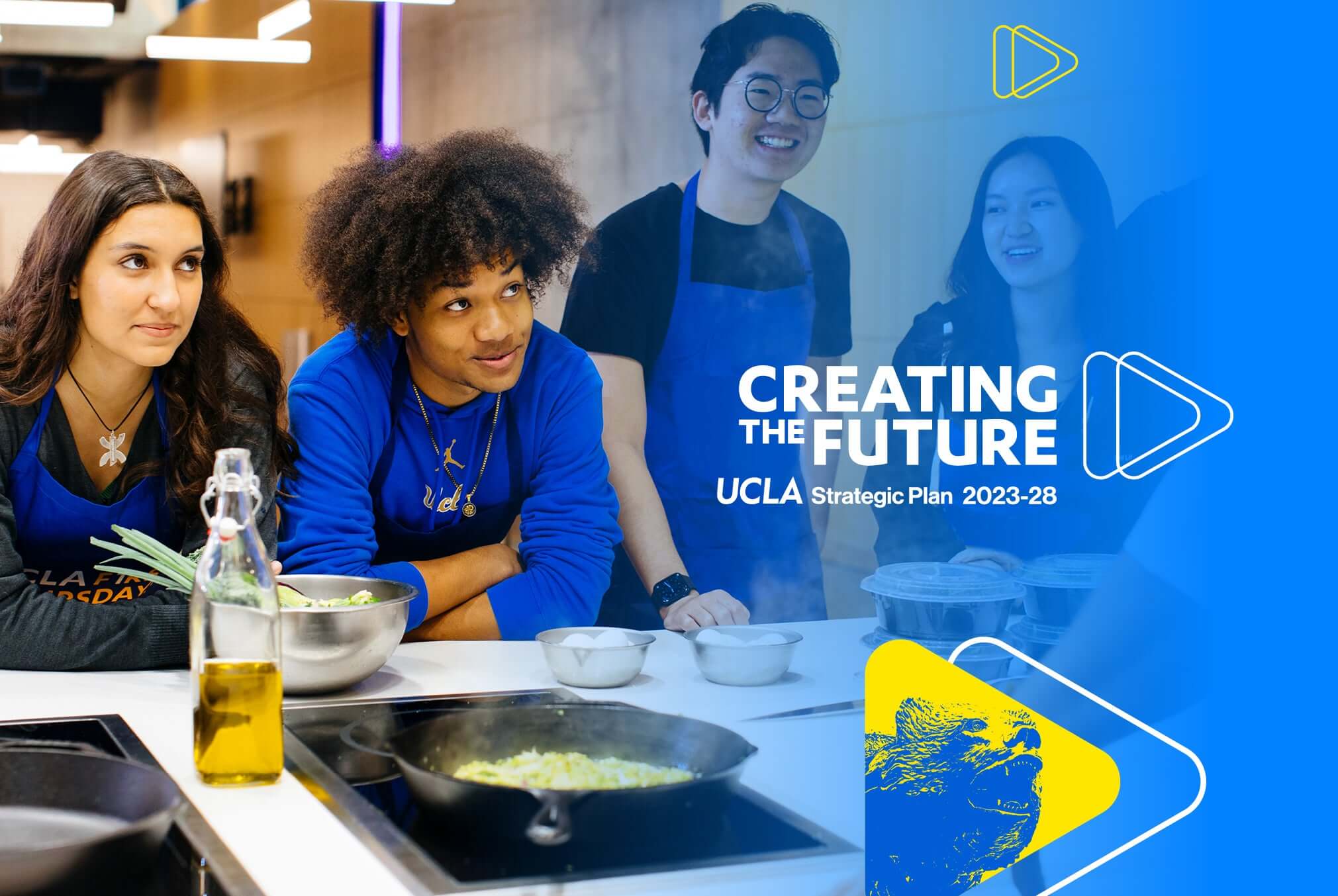Fall 2024 Update

The new academic year is well underway at UCLA, and our students, faculty and staff continue to make a profound impact on campus, across Los Angeles and well beyond. This issue of the chancellor’s quarterly update discusses UCLA’s role in the Getty’s PST Art initiative, offers an update on our strategic plan one year after its launch and shares efforts to help our community prepare for this year’s important elections.
Sincerely,
Darnell Hunt
Interim Chancellor
In this issue
01. UCLA + PST ART: “Art & Science Collide”
02. Creating the Future — One Year at a Time
03. Informed and Involved in Civic Life
UCLA + PST ART: “Art & Science Collide”

This fall marks the return of a massive Getty Foundation-led initiative to bring together art and artists from across Southern California to address a common theme: PST ART 2024: Art & Science Collide. More than 70 museums and cultural institutions and 800 artists are presenting exhibitions and public programs on this theme — and UCLA has received more grant funding for its programs than any other institution. Of the $20 million Getty has invested into research and exhibition support, $2 million went to seven projects tied to UCLA artists, arts research programs and public arts presenters.
PST ART only happens every five years. UCLA’s strong presence in the initiative speaks to our singular stature within the arts research space and to the impact of our creative activities. We are grateful that PST ART 2024 will help us deepen UCLA’s connections to Los Angeles and the world by bringing our artists, scientists, curators and alumni into conversation with local, national and international visitors.
UCLA’s PST ART projects span themes of climate and social justice, indigenous innovation and indigenous futurism, and the growing field of eco-acoustic art. They include hands-on activities, talks with artists and curators, a sculpture being co-created by an artist and a hive of bees, unique auditory experiences, a downtown art exhibition that asked us to think about our reliance on technology, and much, much more.
Throughout the school year you can experience exhibitions and programs from the Hammer and Fowler Museums at UCLA; UCLA’s Center for the Art of Performance, ArtSci Center and Conditional Studio (all housed in the School of the Arts and Architecture); and the Film & Television Archive, which has curated a screening series in partnership with the Department of Film, Television and Digital Media in the School of Theater Film & Television.
Whether at UCLA or other sites across the city, I encourage you to engage with the perspectives, collaborations and collisions that PST ART’s exhibitions bring. These pieces help us think differently about ourselves, our relationships to one another, and our relationship to the materials and beings with whom we share our planet.
I want to close by expressing gratitude to Ann Philbin, who has served as director of the Hammer Museum for the last 25 years. Currently on view at the Hammer is one of Philbin’s final contributions: Breath(e): Toward Climate and Social Justice, one of the flagship exhibitions in this year’s PST ART. Philbin has played a substantial role in elevating not only the profile of the arts at UCLA, but in Los Angeles writ large. She steps down at the end of November and the Hammer’s next director, Zoë Ryan, will take the reins in January.
Creating the Future — One Year at a Time

One year ago, Creating the Future: UCLA Strategic Plan 2023–28 set forth a roadmap for our university focused on five goals:
- Deepen our engagement with Los Angeles
- Expand our reach as a global university
- Enhance our research and creative activities
- Elevate how we teach
- Become a more effective institution
With the concept of inclusive excellence as our foundation, we launched this bold plan with the question: How can UCLA deepen its impact at a moment of transformation within our broader society, within Los Angeles and within our university?
I am pleased to report that we have made great progress towards each of the five goals, with students, staff, faculty, alumni and donors each playing a part. You can view high-level accomplishments on this interactive timeline and get to know a few ‘people behind the plan’ in this UCLA Newsroom series of profiles.
Here are highlights from each of the plan’s goal areas:
- Furthering our connections with the greater Los Angeles region, UCLA launched three grant programs to support community-engaged course development, departmental capacity-building to support community-engaged teaching and Social Impact Collaboratives for community-engaged research.
- UCLA established a Global Advisors Council, which meets monthly and represents 21 schools and divisions across campus, to help coordinate and expand our efforts in global research, education and outreach.
- We started the process of building out the UCLA Research Park, naming Professor Hal Monbouquette as special advisor to the vice chancellor for research and creative activities for the research park and Professor Owen Witte as special advisor to the EVCP on immunology and immunotherapy. UCLA also received $120 million from Alya and Gary Michelson for the new California Institute for Immunology and Immunotherapy, which will be housed at the research park.
- Our Teaching and Learning Center partnered with the Dialogue across Difference initiative to launch the initial DaD Faculty Fellows cohort. The year-long program kicked off last month and supports UCLA instructors of record who are incorporating intellectual engagement, curiosity, empathy, active listening and critical thinking into their course materials and teaching practices.
- A collaborative effort between Campus Human Resources and Information Technology Services resulted in streamlined HR systems for job descriptions (JDXpert), talent acquisition (iCISMS) and client services (Bruin CHR Service Center). With a focus on evaluation of current processes and engagement with partners to tailor these solutions to address campus needs, the HRIT Systems Optimization initiative is a step toward helping UCLA become a more effective institution.
Looking forward, we are excited to continue building on this momentum, tracking our progress and sharing our successes with the Bruin community. Major priorities in the year ahead include growing our presence and programming at UCLA South Bay, UCLA Downtown and the UCLA Research Park. I am grateful to all who have helped shape and advance our goals to date. Your commitment to creating the future is inspiring and will benefit UCLA for years to come.
Informed and Involved in Civic Life

Civic engagement — contributing to the life of and addressing the concerns of one’s broader community — is personally empowering, essential to creating change in society and a core value of our public university.
Voting in local, state and national elections is a central way that many of us get involved in civic life. Leading up to election day on Tuesday, November 5, UCLA is helping the broader public understand the issues at stake this year and putting in place new programs to ensure our community members are able to make their voices heard at the ballot box.
Over the past several months, UCLA scholars have weighed in on topics as wide-ranging as President Joe Biden’s decision not to seek a second term, Gen Z’s voting habits, misinformation on social media, voter ‘calcification’ and more. The Hammer Museum and UCLA Law’s Safeguarding Democracy Project have hosted a series of events on the law and logistics of ensuring free and fair elections; our Latino Policy and Politics Institute released timely research on Latino voters in key competitive states; and UCLA Government and Community Relations and the UCLA Alumni Association hosted events focused on explaining local and statewide ballot measures. These are just a sampling of the many ways in which UCLA scholarship and programs are helping voters understand candidates’ positions and the issues on the ballot in a critical election year.
In addition to these efforts, our Civic Learning and Democratic Engagement (CLDE) Network, a campuswide initiative coordinated by Campus Life and the Center for Community Engagement, recently launched a new website to elevate civic engagement on campus. CLDE’s work adds to that of UCLA’s longstanding BruinsVote program, a voter registration and mobilization effort developed by a non-partisan coalition of students, student organizations and campus partners. UCLA will host vote centers this year in De Neve Plaza, at the Hammer Museum and in Ackerman Union.
Participating in civic life is essential for a healthy democracy and a vital part of the UCLA experience. As we approach this important election, I encourage every member of our extended campus community to engage thoughtfully, make informed decisions, and, for those eligible, exercise your right to vote.
